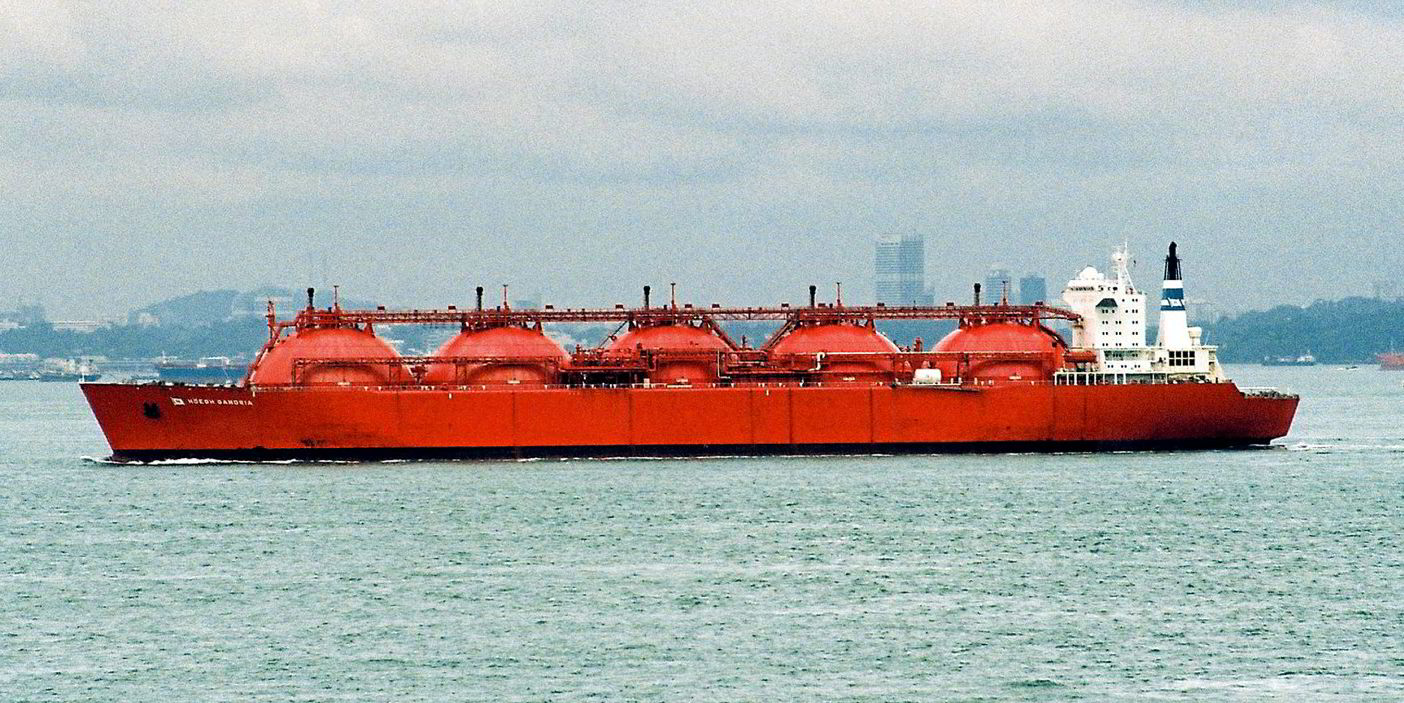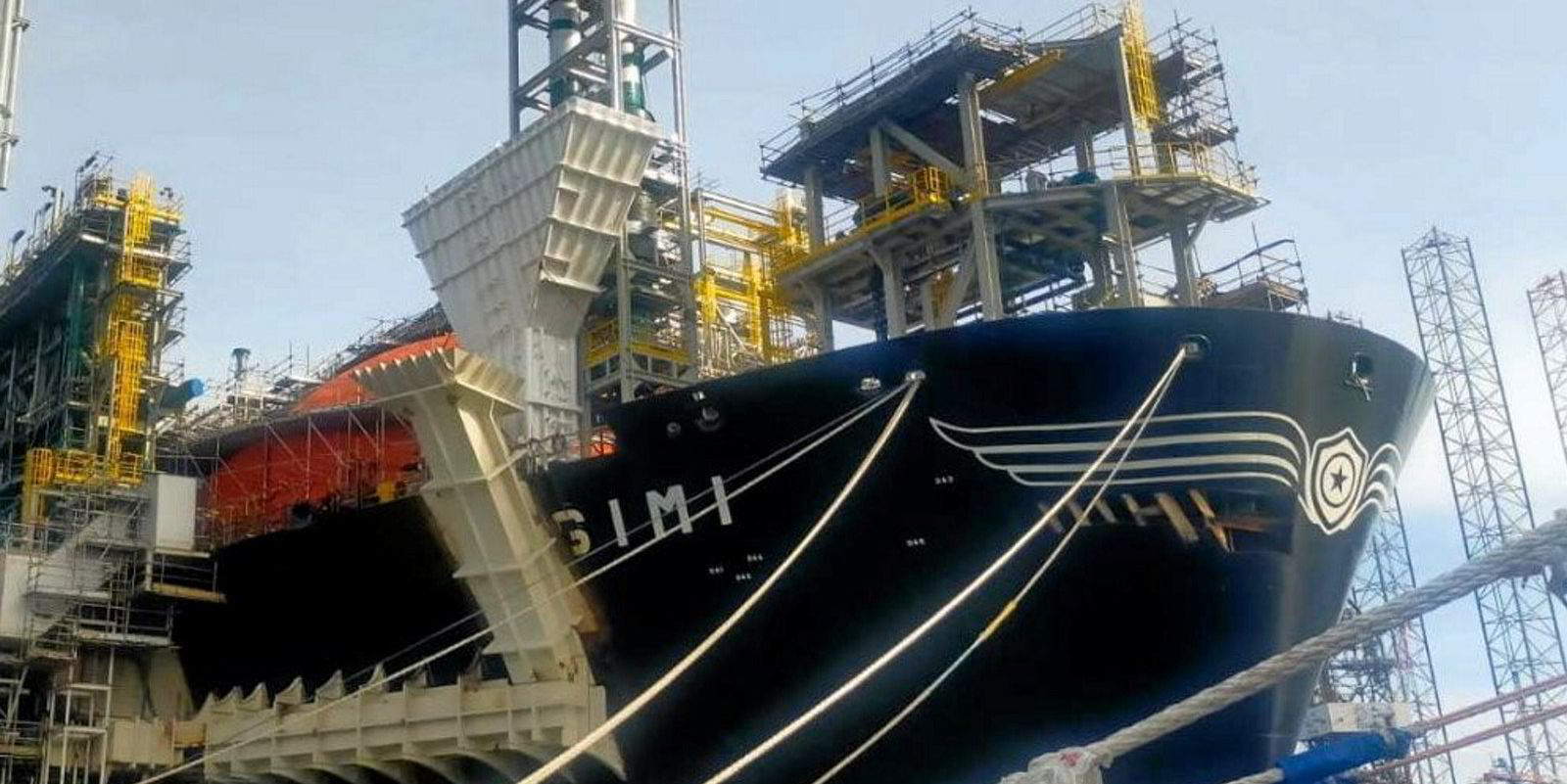Floating LNG production-focused Golar LNG is in the process of selling for scrap one of the vessels it had lined up as a potential conversion candidate for an FLNG unit.
Demolition brokers said the 126,000-cbm Golar Gandria (built 1977) has been sold on an “as is” basis in Labuan, in east Malaysia where the ship has been laid up.
A price of $447 per lightweight tonnage (lwt) has been quoted on the 34,131-lwt vessel, equating a total of around $15.3m on the 46-year-old steam turbine ship.
The vessel is being reported as negotiated for sale under strict green recycling terms.
Brokers said the price also reflects the need to tow the ship from Labuan. The ship will reportedly be delivered to a recycling facility after the monsoon season, which ordinarily lasts until September.
The company has been contacted for confirmation and comment about the reports.
The company lists the Golar Gandria as a “candidate for future FLNG projects” on its website.
In November 2022, Golar chief executive Karl Fredrik Staubo told analysts on a results call that the company had the option to use its existing vessel, the Golar Gandria, as a candidate for conversion into an FLNG unit.
But Staubo also said Golar wanted to buy a vessel with a higher storage capacity and had been inspecting Moss-type ships.
In February, the CEO revealed Golar had paid a $5m deposit on a 19-year-old, Japanese-built, Moss-type LNG carrier, for a total purchase price of $77.5m. This has been identified as TMS Cardiff Gas’ 149,172-cbm Fuji LNG (built 2004).
The Golar Gandria is one of two 1977-built LNG carriers which together rank as the oldest vessels in this sector’s existing fleet.
The vessel was ordered on speculation in 1977 and spent most of its early life in lay-up until the start of its charter to Indonesia’s state energy giant Pertamina in 1986.
In 2006, the LNG carrier experienced an engine-room flood while at anchor off Singapore.
Golar bought the ship two years later in a joint venture while in pursuit of a vessel to convert into a floating storage and regasification unit for South Africa.
The company laid up the vessel in Labuan in the same year.
In 2017, the ship became embroiled in a tug-of-war with its then lay-up provider, with Golar keen to put the ship into a Singapore yard for conversion into an FLNG unit for Equatorial Guinea. But these plans did not materialise.
The Golar Gandria now looks set to rank as the fourth LNG carrier sold for demolition in 2023.
The year is turning out to be a busy one for scrap sales to date, with Seapeak and Sinokor Merchant Marine both opting to send ships to the breakers in the first quarter.
Outside of LNG, the highest reported scrap price over the past week was $625 per ldt for Hong Kong-based Moon Keung Shipping’s 760-teu container ship Blue Ocean (built 1989). The ship will be recycled in Chattogram, with its owner walking away with $2.7m.
Three Chinese-controlled ships were also reported as sold to ship recycling facilities in Bangladesh.
Wantong International Group sold a pair of 1977-built bulk carriers, the 29,600-dwt Xiang Jiang 6 for $563 per ldt, or $4.1m, while no price was disclosed for the 37,200-dwt Tian He Shun.
Ningbo Haizhou Logistics’ 22,300-dwt general cargo ship Xin Hai Zhou 7 (built 1999) was also sold to Bangladesh for an undisclosed sum.
Turkish recyclers, who have only made sporadic purchases in recent months, were reported to have acquired the 3,220-cbm LPG carrier Taurogas (built 1993) from Peruvian owner Transgas Shipping Lines for $404 per ldt, or $1.7m.
Cash buyers and recycling brokers indicated in their latest market reports that buying activity remains sluggish due to the lack of available tonnage, while recyclers on the Indian subcontinent continue to exercise caution on the buying front due to lacklustre demand for scrap steel from domestic steel mills.






